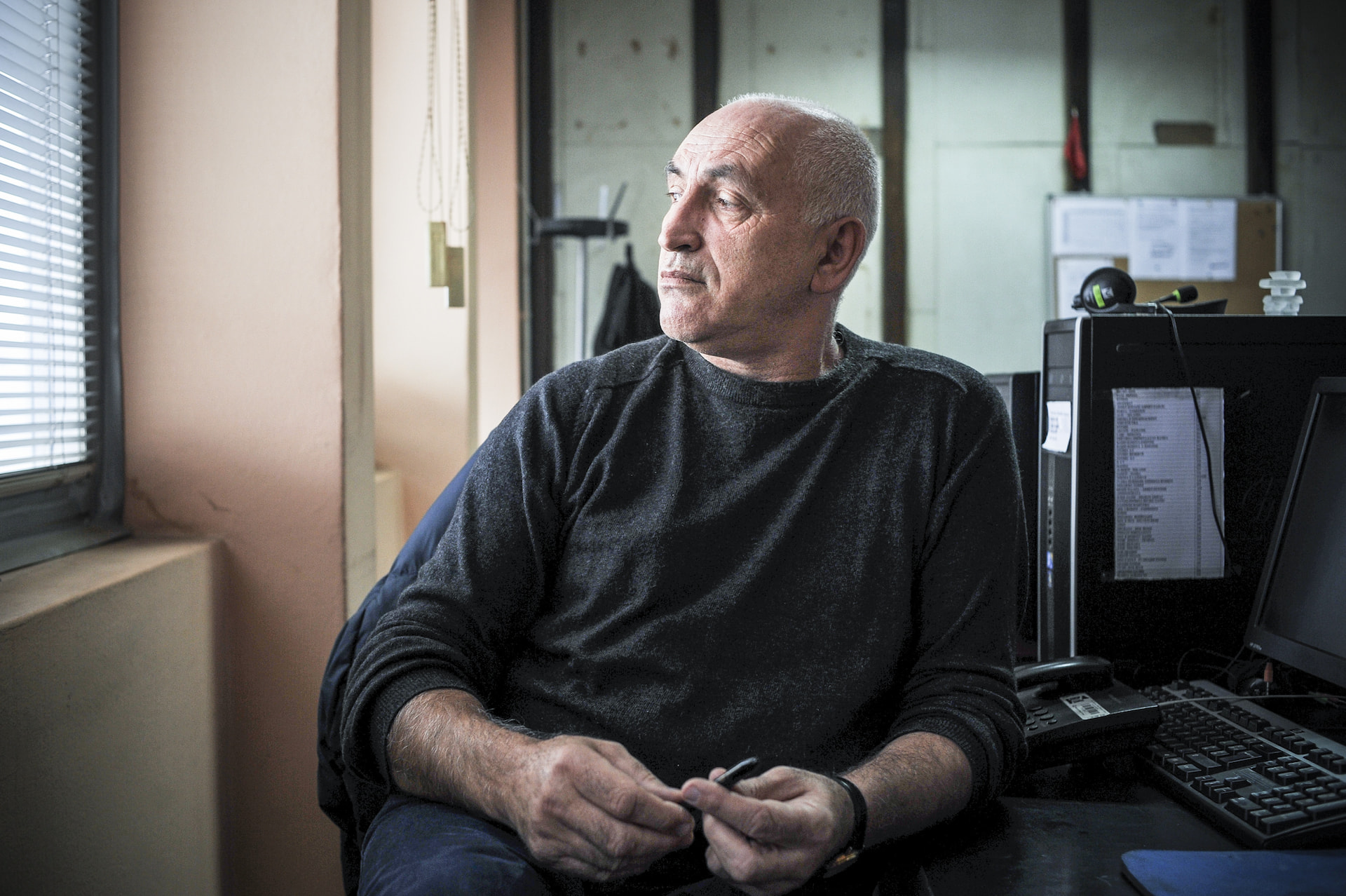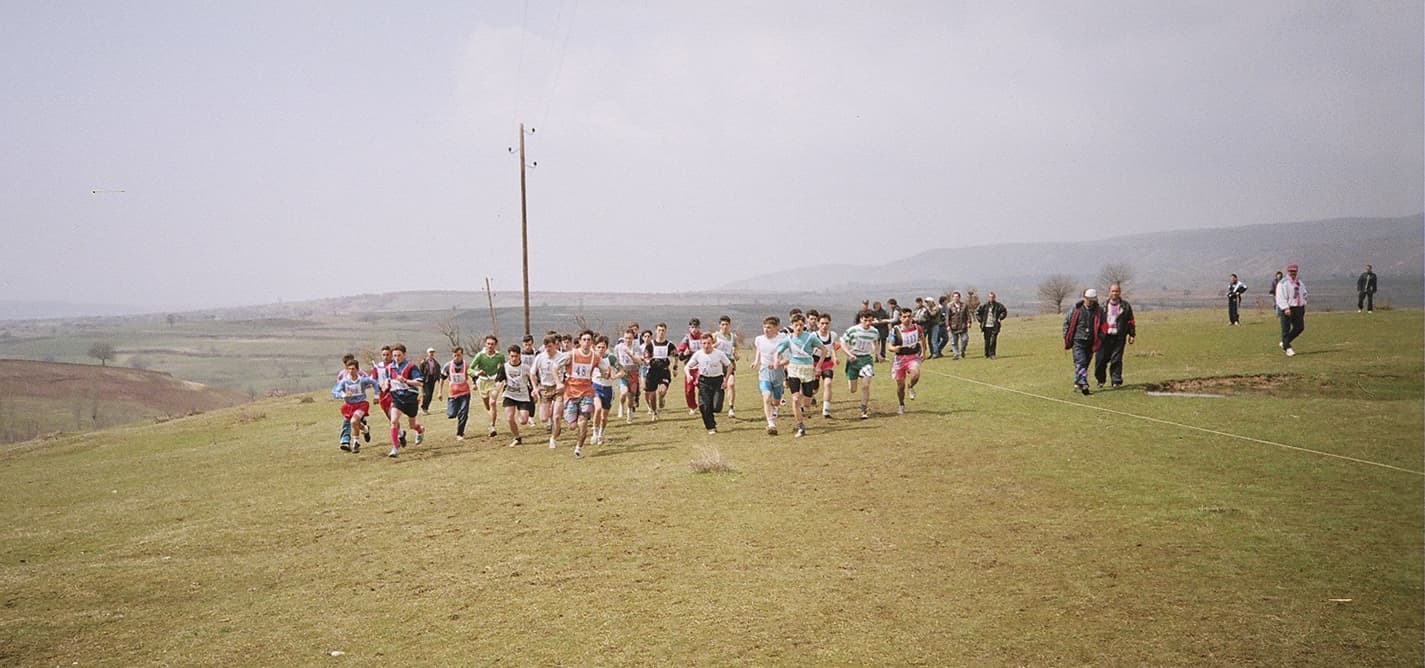
Journalist Gani Kosumi's photos detail a difficult time in Kosovo sports history.
His career began as an aspiring journalist while attending his studies at the University of Prishtina, Faculty of Philology Department of Literature in the early 1980s. Noticing his passion, Kosumi’s professors would often buy the daily newspapers for him so that he could browse the sports section. Soon after, he became a regular reporter for the university’s newspaper, Bota e Re, mostly covering university matches. By 1981, he moved onto radio journalism, covering sports for Radio Prishtina. Until that point, Kosumi had been covering Kosovo sports through writing and radio story-telling. Now the camera would become his work companion as he began traveling across Kosovo to games and matches. This led to his remarkable collection of work, particularly his documentation of Kosovo sports during the 1990s.
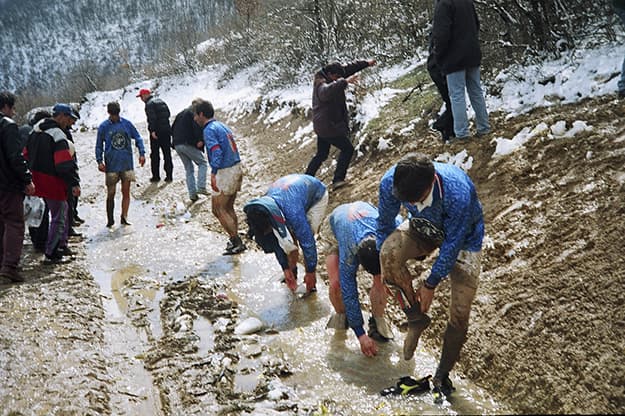
After a football match of the Kosovo Championship in the village of Llukar in March 1997, Kosovo Albanian football players wash in a river before heading back home.
As the wars began unraveling in what was then Yugoslavia in the early 1990s, the Serbian regime had banned Kosovar Albanians from participating in public life. Public spaces in cities across Kosovo were ethnically divided; Albanian state employees in public institutions were forced to leave their positions; Albanian media outlets were either closed down or under constant threat. Sports in Kosovo faced the same reality — but they did not cease to exist. They began organizing in school facilities that were still open, though rundown, as well as in parks and fields throughout Kosovo. A variety of sports continued to live, such as football, karate, handball, table tennis, skiing and chess. Kosumi ensured that sports journalism persevered as well.
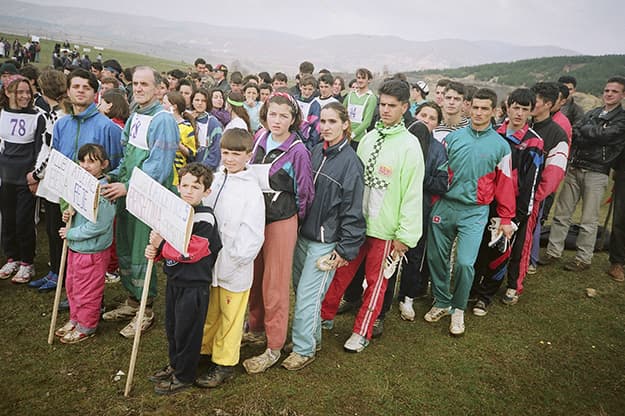
Spring cross 1997 held in Karaceva village, in Kamenica, organized by the Kosovo Athletic Federation.
People hesitated to have cameras at the time,' Kosumi says. I took a risk.
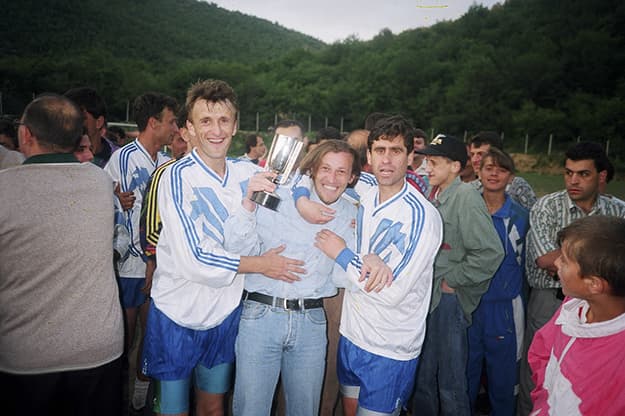
Eroll Salihu (left), Afrim Tovërlani (center), and Arbnor Morina (right), players with the Prishtina Football Club, celebrate after becoming 1996-97 Kosovo champions, in Llukar, Prishtina.
He remembers one significant incident in 1995, when the Independent Association of Kosovo Sports had organized an award ceremony for athletes of the year in a restaurant in Fushe Kosova. Participants would often organize car-pooling amongst each other and split the price of gas to travel — whether it be to events or matches themselves, which would gather up to 6,000 spectators. On that particular day, however, a group of 40 armed Serbian police officers barged into the venue halfway through the ceremony and confiscated all the awards. Kosumi recalls that 24 people were arrested, including himself, and kept in the police station in Prishtina for four hours. Because Kosumi was also covering Kosovar sports through the public Radio Television of Albania at the time, he made sure that the story went on the air.
“Through that small 15-minute window that we had [in Radio Television of Albania], people here and in the diaspora were informed about what was happening in Kosovo regarding sports.”
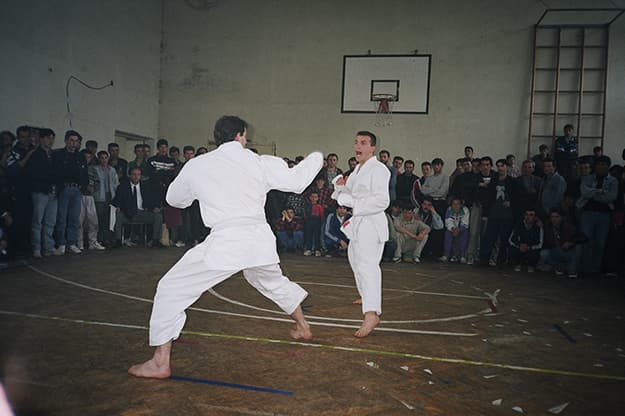
European Champion Afrim Latifi, right, fights Blerim Kelmendi in the Kosovo martial championship in Bresalac on June 24, 1997. Latifi won the match and became Kosovo champion.
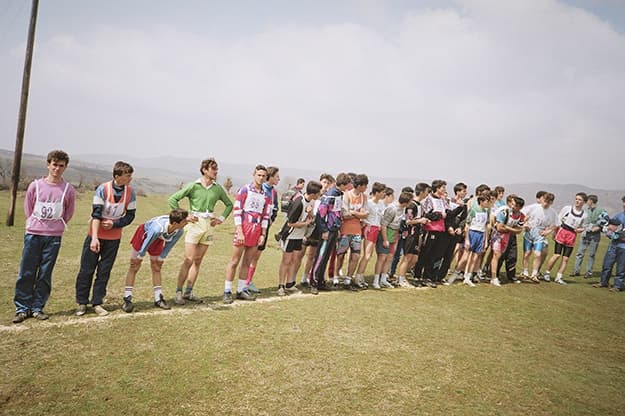
Prishtina elementary and high school cross competition, 1996.
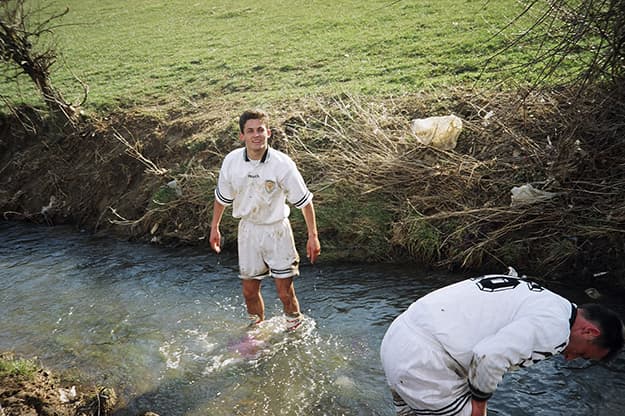
In the village of Dumnica, Llap area, a football player is seen after a match in 1997.
Whether reporting for the radio or writing the results of games, today it is Kosumi’s photos that best document the difficult conditions in which sports were organized, and illustrate equally the will and determination of the people in them. So it is precisely this documentation throughout the 1990s that lent him the nickname “the gallery of Kosovo sports” — and that is no understatement. Kosumi has around 8,000 photographs, all stored in albums in his house in Prishtina. On top of that, Kosumi also has about 300 to 400 films that he has not yet been able to digitize. The photographs featured here offer insight through Kosumi’s camera into the world of sports in Kosovo during the 1990s.
